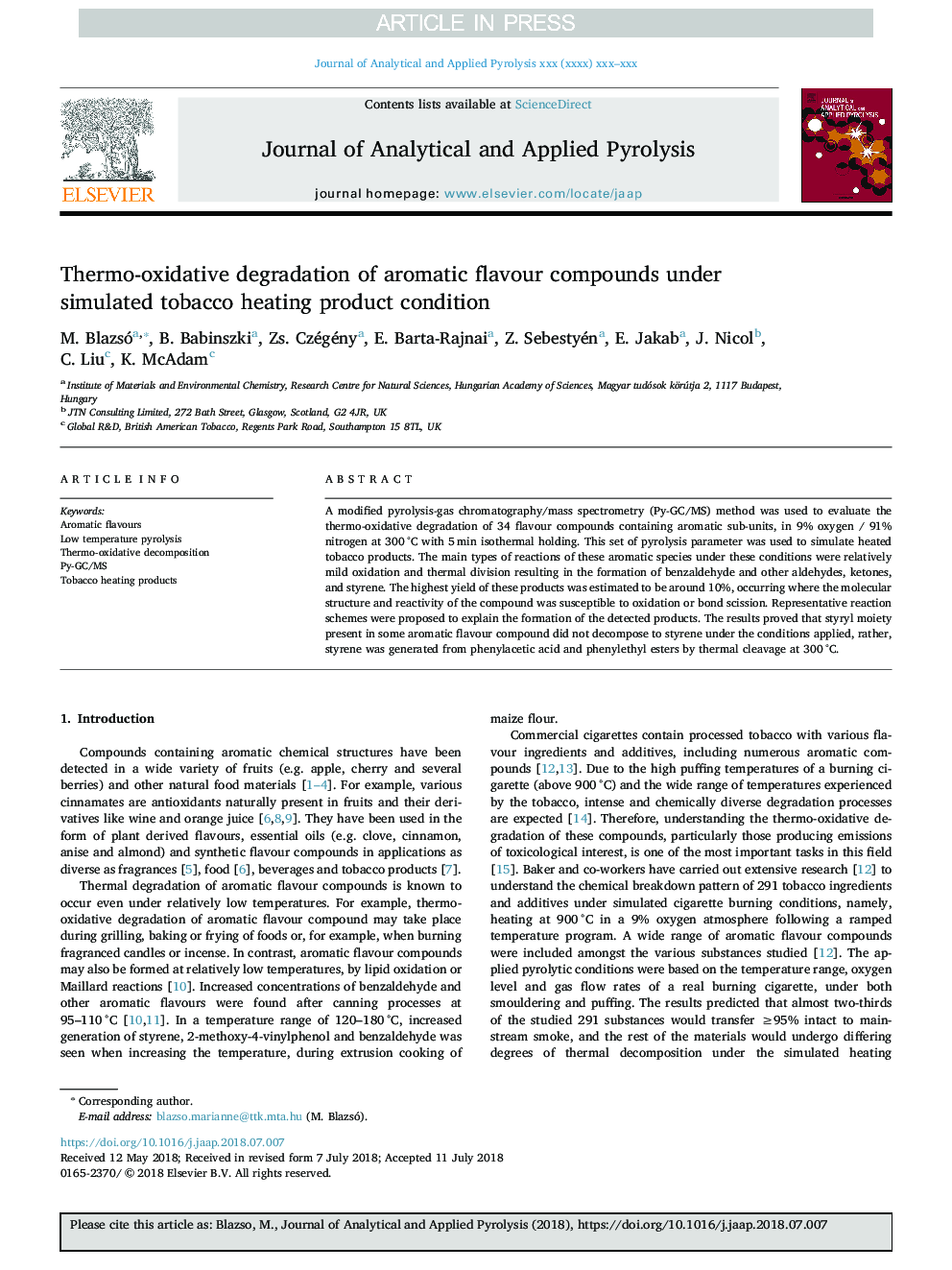| Article ID | Journal | Published Year | Pages | File Type |
|---|---|---|---|---|
| 8954863 | Journal of Analytical and Applied Pyrolysis | 2018 | 10 Pages |
Abstract
A modified pyrolysis-gas chromatography/mass spectrometry (Py-GC/MS) method was used to evaluate the thermo-oxidative degradation of 34 flavour compounds containing aromatic sub-units, in 9% oxygen / 91% nitrogen at 300â°C with 5âmin isothermal holding. This set of pyrolysis parameter was used to simulate heated tobacco products. The main types of reactions of these aromatic species under these conditions were relatively mild oxidation and thermal division resulting in the formation of benzaldehyde and other aldehydes, ketones, and styrene. The highest yield of these products was estimated to be around 10%, occurring where the molecular structure and reactivity of the compound was susceptible to oxidation or bond scission. Representative reaction schemes were proposed to explain the formation of the detected products. The results proved that styryl moiety present in some aromatic flavour compound did not decompose to styrene under the conditions applied, rather, styrene was generated from phenylacetic acid and phenylethyl esters by thermal cleavage at 300â°C.
Related Topics
Physical Sciences and Engineering
Chemistry
Analytical Chemistry
Authors
M. Blazsó, B. Babinszki, Zs. Czégény, E. Barta-Rajnai, Z. Sebestyén, E. Jakab, J. Nicol, C. Liu, K. McAdam,
